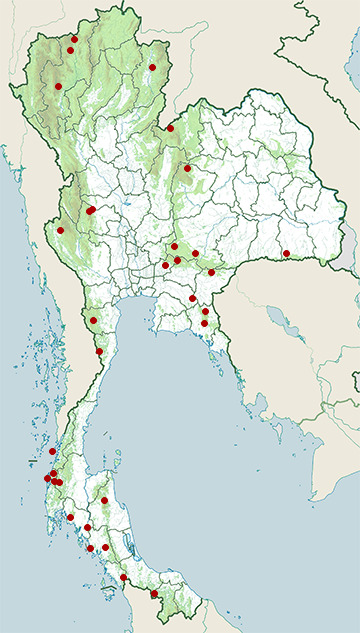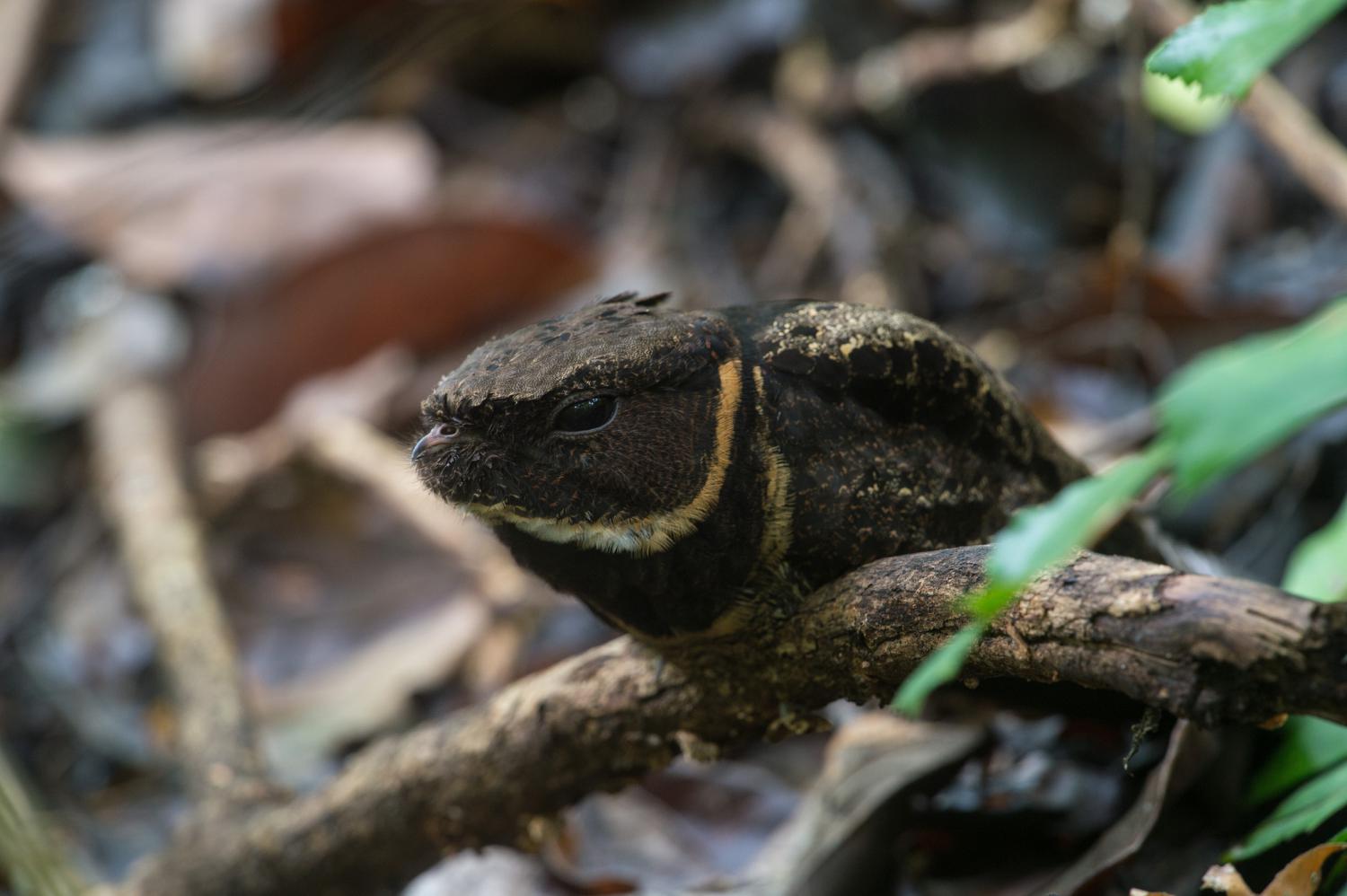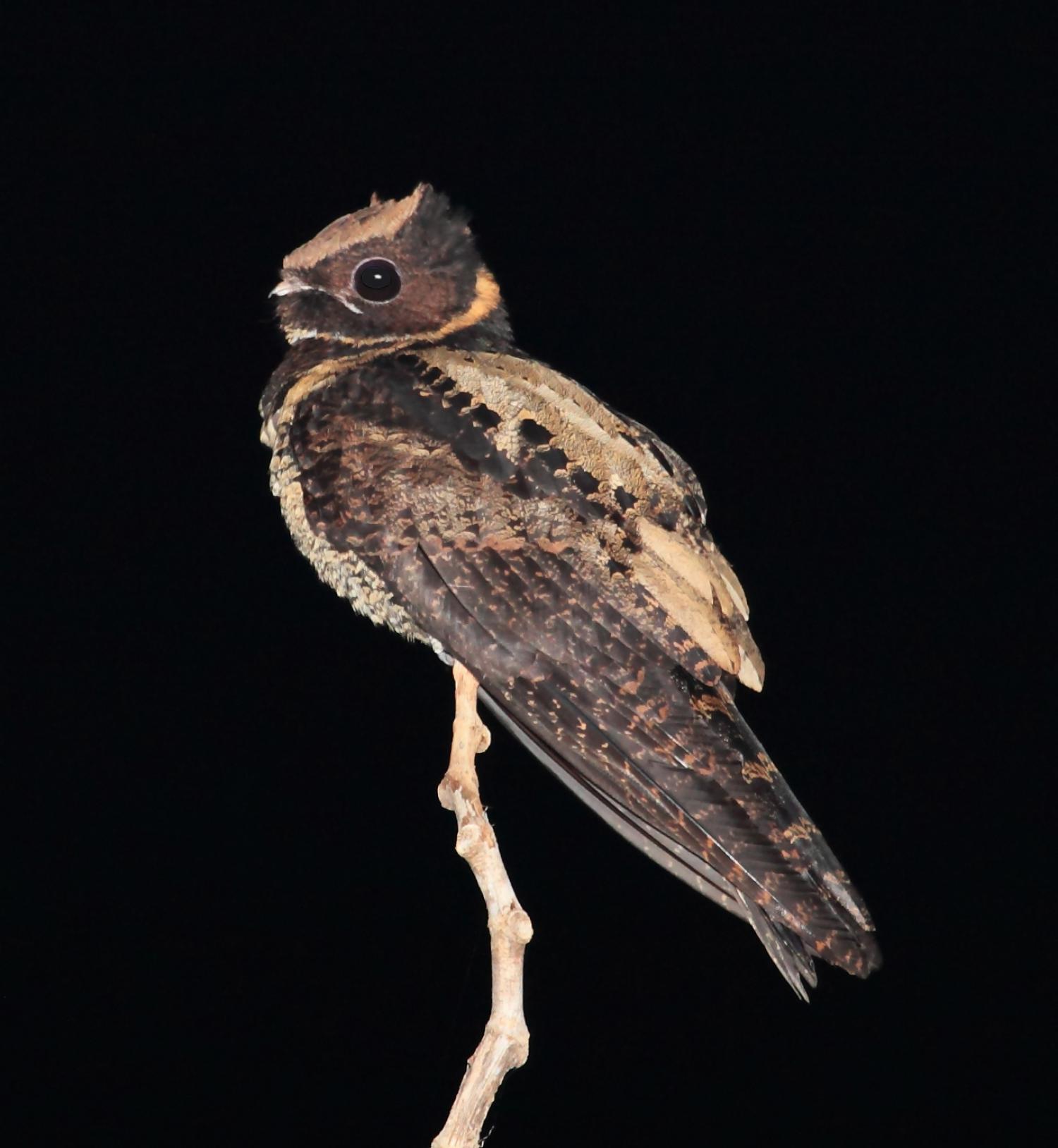Species of Thailand
Great eared nightjar
Lyncornis macrotis
Nicholas Aylward Vigors, 1831
In Thai: นกตบยุงยักษ์
The great eared nightjar (Lyncornis macrotis) is a species of nightjar in the family Caprimulgidae. It is the largest species in the family in terms of length, which can range from 31 to 41 cm. Males weigh an average of 131 g and females weigh an average of 151 g so it the second heaviest species in the family after the nacunda nighthawk.
Distribution and habitat
It is found in Southeast Asia with populations in the Western Ghats and Sri Lanka Bangladesh, India, Indonesia, Laos, Malaysia, Myanmar, the Philippines, Thailand, and Vietnam.
Its natural habitat is subtropical or moist lowland tropical forests.
Behaviour
Like other nightjars they are active at dusk and at night. They have a distinctive call which includes a sharp tsiik followed by a pause and a two-syllable ba-haaww.
Breeding
The nest is a scrape on the ground and the clutch consists of a single egg. The chicks are well camouflaged among leaf litter.
Taxonomy
Several populations are given subspecies status and include:
- the nominate form macrotis (Vigors, 1831) from the Philippines
- bourdilloni (Hume, 1875) of the Western Ghats
- cerviniceps (Gould, 1838) along the eastern Himalayas into Indochina and northern Malaysia
- jacobsoni (Junge, 1936) of Simeulue Island
- macropterus (Bonaparte, 1850) from the islands of Sulawesi, Talaud, Sangihe, Banggai and Sula
This article uses material from Wikipedia released under the Creative Commons Attribution-Share-Alike Licence 3.0. Eventual photos shown in this page may or may not be from Wikipedia, please see the license details for photos in photo by-lines.
Category / Seasonal Status
BCST Category: Recorded in an apparently wild state within the last 50 years
BCST Seasonal status: Resident or presumed resident
Scientific classification
- Kingdom
- Animalia
- Phylum
- Chordata
- Class
- Aves
- Order
- Caprimulgiformes
- Family
- Caprimulgidae
- Genus
- Lyncornis
- Species
- Lyncornis macrotis
Common names
- Thai: นกตบยุงยักษ์
Subspecies
Lyncornis macrotis bourdilloni, Allan Octavian Hume, 1875
Range: Western Ghats
Lyncornis macrotis cerviniceps, John Gould, 1838
Range: Along the eastern Himalayas into Indochina and northern Malaysia
Lyncornis macrotis jacobsoni, George Christoffel Alexander Junge, 1936
Range: Simeulue Island
Lyncornis macrotis macropterus, Charles Lucien Bonaparte, 1850
Range: From the islands of Sulawesi, Talaud, Sangihe, Banggai and Sula
Lyncornis macrotis macrotis (nominate), Nicholas Aylward Vigors, 1831
Range: Philippines
Synonyms
- Eurostopodus mindanensis
Conservation status

Least Concern (IUCN3.1)
Photos
Please help us review the bird photos if wrong ones are used. We can be reached via our contact us page.
Range Map

- Chiang Dao Wildlife Sanctuary
- Doi Inthanon National Park
- Hat Chao Mai National Park
- Huai Kha Khaeng Wildlife Sanctuary
- Huai Sala Wildlife Sanctuary
- Kaeng Krachan National Park
- Khao Ang Rue Nai Wildlife Sanctuary
- Khao Khitchakut National Park
- Khao Laem National Park
- Khao Luang National Park
- Khao Phra - Bang Khram Wildlife Sanctuary
- Khao Soi Dao Wildlife Sanctuary
- Khao Sok National Park
- Khao Yai National Park
- Khon San District, Chaiyaphum
- Khura Buri District, Phang Nga
- Ko Phayam
- Ko Phra Thong
- Kui Buri National Park
- Lan Sak District, Uthai Thani
- Mueang Krabi District, Krabi
- Mueang Nakhon Nayok District, Nakhon Nayok
- Pak Chong District, Nakhon Ratchasima
- Pang Sida National Park
- Pha Daeng National Park
- Phu Ruea National Park
- Sakaerat Environmental Research Station
- San Kala Khiri National Park
- Sri Phang Nga National Park
- Thale Ban National Park
- Tham Sakoen National Park
- Yan Ta Khao District, Trang

